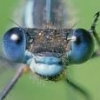Why did Leica use a British thread pitch and profile for the L39 mount
-
Recently Browsing 0 members
- No registered users viewing this page.
-
Similar Content
-
- 65 replies
- 15,851 views
-
- 4,921 replies
- 513,386 views
-
- 9,939 replies
- 1,116,255 views
-
- 5,318 replies
- 486,547 views
-
- 550 replies
- 79,333 views
-





Recommended Posts
Join the conversation
You can post now and register later. If you have an account, sign in now to post with your account.
Note: Your post will require moderator approval before it will be visible.